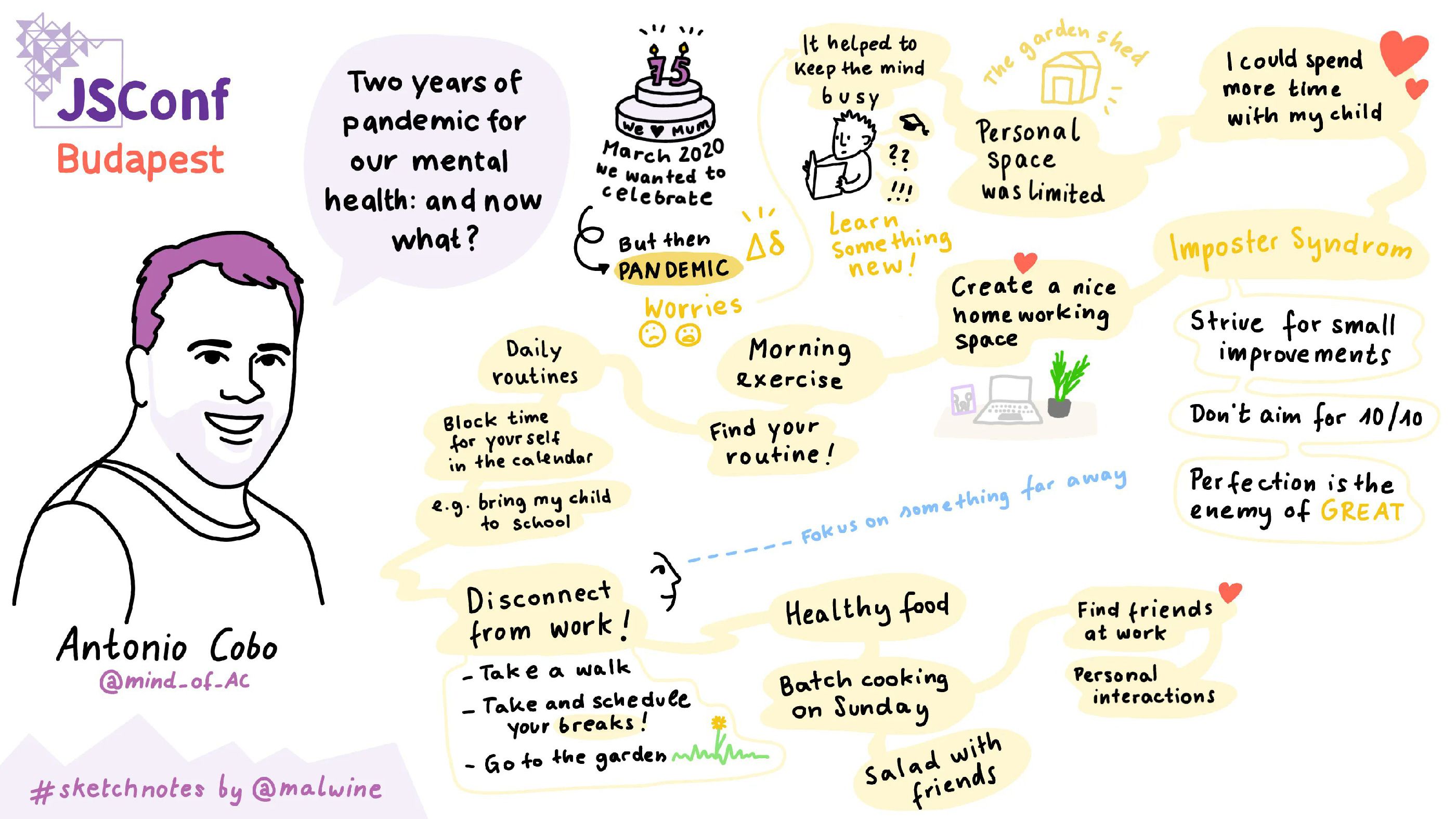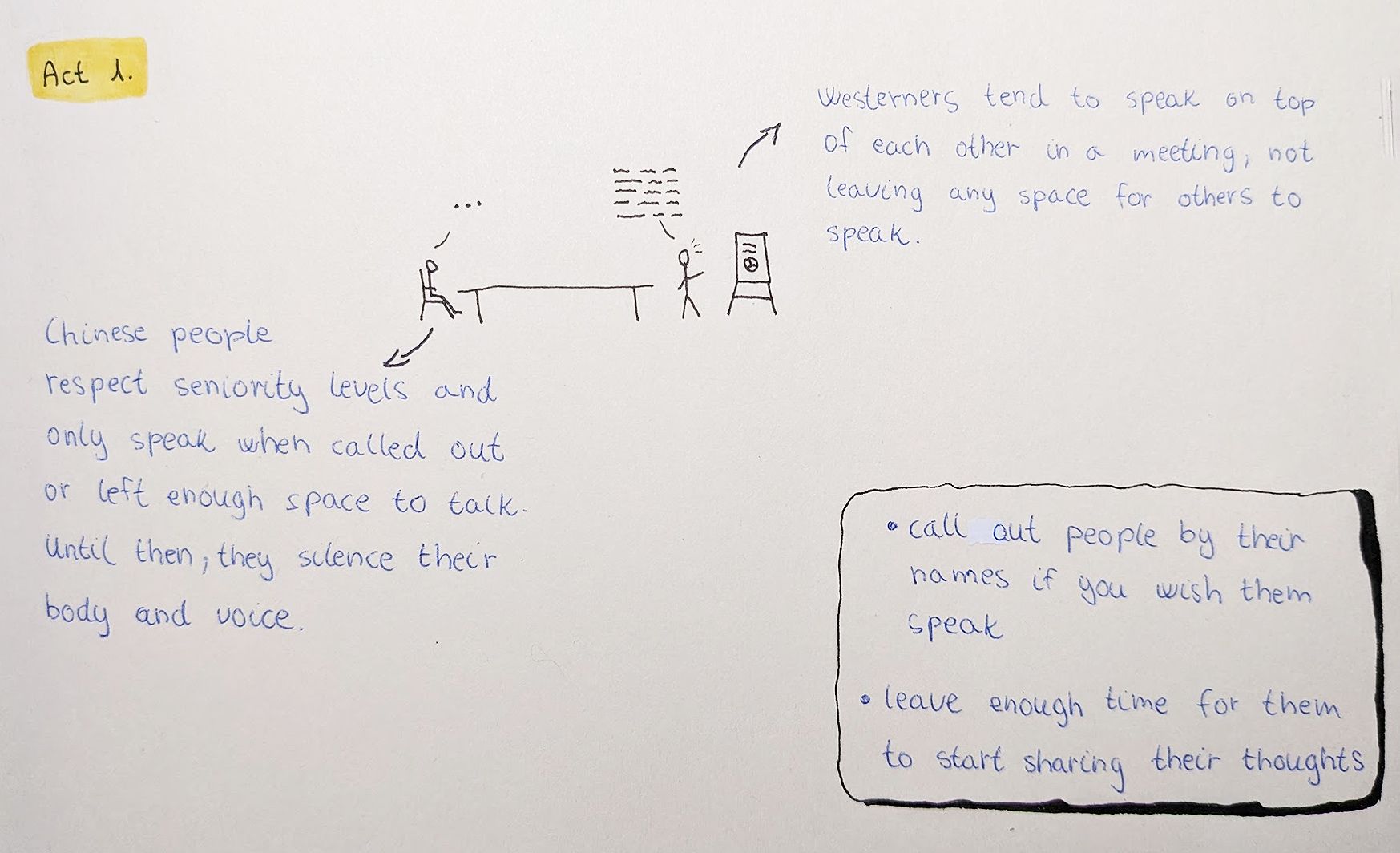How to sketchnote books?
I have a hard time remembering important information when reading a book or an article, and I'm reading to educate myself. I got frustrated and neglected this habit because of this, and now tons of reading materials are waiting for me to consume them. I tried to find a solution, and this is how I came up with an idea: make skentchnotes!
Research has found that 65% of the population are visual learners, meaning they need to see information to retain it. Since I already love taking notes by hand, I added a little bit more fun to it.
At our conferences, we always try to hire sketchnoters because the audience loves it, and it summarizes a talk in a fun way which is easier to consume for our readers. Here is an example from Malwine from JSConf Budapest 2022.

Searching for more could make you feel intimidated because most of them are a piece of art, but it doesn't have to be! Stick figures and simple lines will do the job, as long as it helps you understand and learn.
Step 1: read a book and annotate
Obviously for sketchnoting, you have to read a book. My approach here is to mark the parts which seem interesting or important to me. To do this, I'm using arrow-shaped sticky note flags because I don't like writing in books, but if you are fine using a pencil, feel free to do so! I also don't wish to interrupt my reading so I just quickly stick an arrow and move on, making notes later. This helps me to stay focused on the book and also reread the paragraph which also helpes me to memorise it.
Step 2: get ready for note taking
As I said, we are not aiming for the perfect artwork here, we just want to preserve the information. Any kind of tool and notebook will do! It's all up to your liking. I'm using a sketchbook which is good for markers, so they won't bleed through the paper [they actually did, lol]. I also use a pencil, and fineliner pens. I'm fond of Sakura and Faber-Castell brands but they are a bit expensive, and if you are just experimenting with this method, cheaper versions will do just fine.
First, I do a rough sketch of how I imagine my notes would look. Here goes a little illustration, and there goes the paragraph I wish to remember. I'm using a pencil to have the chance to erase and rearrange my notes.
I try to illustrate the paragraph that seemed interesting and write the actual citation from the book. Depending on the situation, I draw a box and add my key takeaways. Here you can see an example from the book called The Culture Map, written by Erin Meyer. This book is about helping understand different cultural behaviours, and ease communication with people.

This is my very first sketchnote, as you can see it's not that detailed, I even used too much space for one small chapter. It is fine, still learning here! This chapter was about how Americans and Chinese behave at an important meeting. My drawing tries to illustrate that the American speaker talks way too much, while the Chinese colleague stays silent. In the box in the bottom right corner, you can see my key takeaways about this situation.
I'm a researcher and this already helped me communicate with these two nationalities.
Step 3: enjoy!
Make sure to derive pleasure from the process! This method is intended to help you learn and not just cause more stress or add another task to your to-do list.
Sketchnoting takes time to master. You have to experiment and invest time to understand yourself and what helps you preserve information. For me, this method definitely worked, and I recommend giving it a try! There is a very little at stake but potentially great rewards in the end.